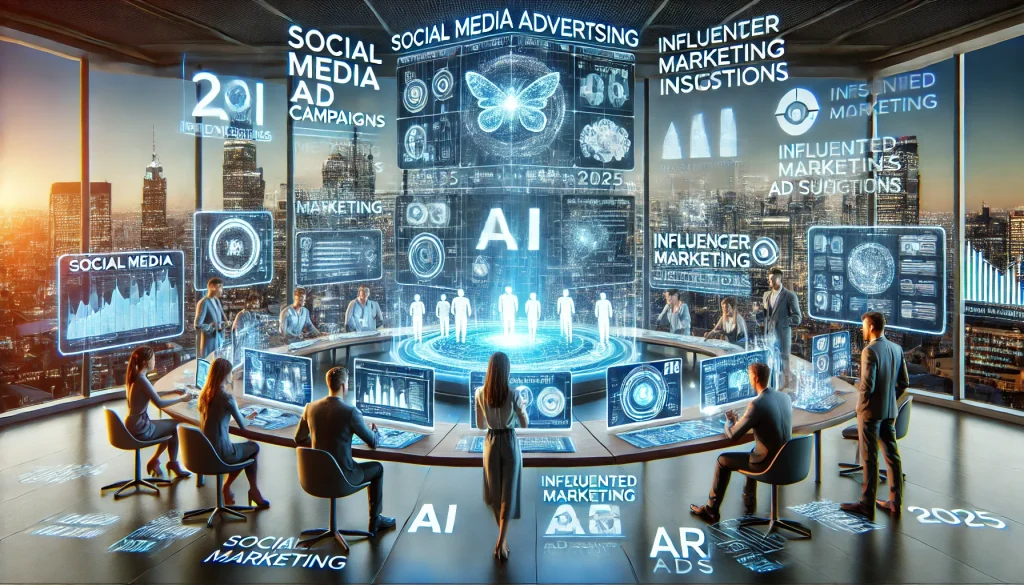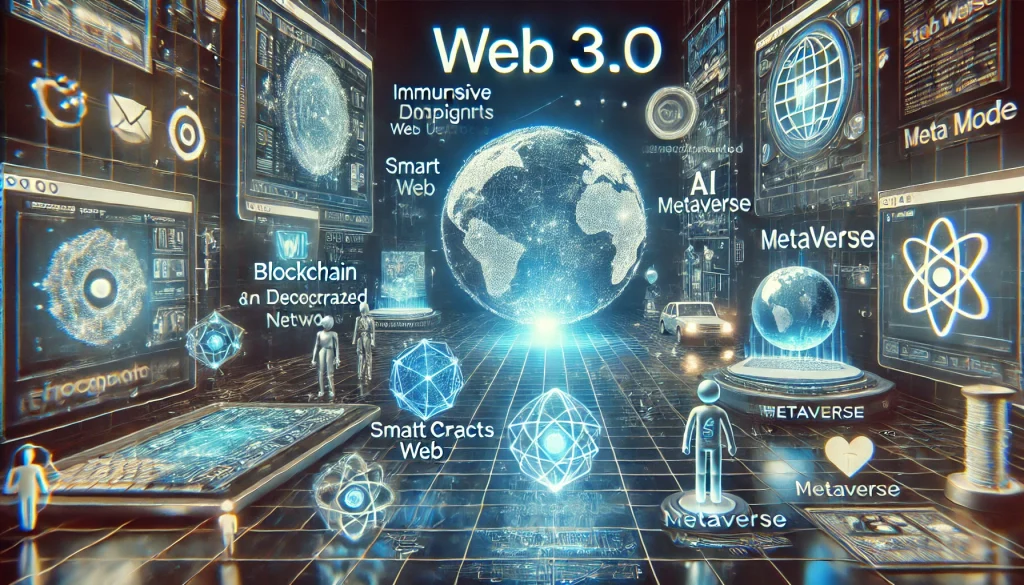Is it Worth It? How to Evaluate the Success of Your Website Redesign

You’ve invested time, energy, and capital into website redesign services, maybe even revamped your brand entirely. But now that your new site is live—what’s next? Was the investment worth it? A website redesign is more than a visual facelift. It’s a strategic move aimed at boosting performance, enhancing user experience, and increasing conversions. However, to ensure you’ve actually moved the needle, you must measure success through clear, actionable KPIs. In this blog, we’ll explore the most effective ways to evaluate your redesign and determine whether it delivered true ROI—or just pretty pixels. 1. Set Clear Goals Before You Launch The first step to evaluating success is knowing what you’re measuring against. Every redesign should be aligned with specific business objectives. Common Goals Include: If your redesign didn’t begin with goal-setting, start now by defining what “success” looks like for your brand. 2. User Experience Metrics: Are Visitors Enjoying the New Design? User Experience (UX) is at the forefront of every effective redesign. Good design guides users toward actions—great design makes those actions frictionless. Key UX KPIs: If these metrics improved, then your custom web development and UX decisions are paying off. 3. Conversion Rates: Is the New Design Driving Action? The primary goal for most websites is to convert visitors—whether that means purchases, sign-ups, downloads, or form submissions. Comparing pre- and post-redesign conversion rates is critical. Metrics to Watch: Tip: Use A/B testing tools like Google Optimize to experiment with CTA placements, layouts, and messaging post-redesign. 4. SEO Performance: Did Your Rankings Survive the Makeover? A poorly executed redesign can sabotage search engine visibility. A well-executed one will maintain or even enhance it. SEO Metrics to Evaluate: Working with a developer skilled in responsive website design ensures mobile-first optimization, which is now critical for Google rankings. 5. Mobile Responsiveness: Is It Truly Mobile-First? With more than half of global traffic coming from mobile, your redesign must excel on smartphones and tablets. Test With: If mobile bounce rates have dropped and engagement has increased, your responsive website design is doing its job. 6. Website Speed: Faster = Better Speed kills—especially slow websites. Site performance plays a major role in both UX and SEO. Use Tools Like: Improve By: If your bounce rate is dropping and conversion rate is rising, performance upgrades from your website redesign services are likely a key factor. 7. Heatmaps and Session Recordings: Watch Real Users in Action Numbers are valuable, but behavioral tools offer goldmines of insight. Tools to Use: Watch how users navigate, where they get stuck, and where they click. These qualitative insights validate your redesign decisions—or highlight where tweaks are needed. 8. Accessibility Improvements: Inclusive Design = Better Results Designing for accessibility not only expands your audience—it often leads to better UX for everyone. Evaluate: Accessibility improvements can indirectly impact bounce rate, engagement, and conversion rates—especially on forms and navigation menus. 9. Technical Health: Is Your Backend Built to Last? A polished front end needs a robust back end. Quality custom web development ensures fast load times, fewer errors, and a smoother user journey. Key Checks: If your site is throwing fewer errors and your time-to-first-byte (TTFB) is faster, the backend overhaul was a win. 10. ROI: The Ultimate Success Indicator All your metrics feed into one final judgment: return on investment. Did the money you spent on redesign actually increase revenue or leads? Formula:ROI = (Net Profit from Redesign – Cost of Redesign) / Cost of Redesign x 100 Track long-term benefits like: A high ROI means your website redesign services investment was absolutely worth it. 11. Stakeholder and Customer Feedback: Gut-Checks Matter Too Don’t ignore qualitative feedback. What do customers, clients, and internal teams say about the new design? Collect Feedback From: Sometimes the clearest signals of success come from the people actually using your site. Measure What Matters, Then Iterate The only way to know if your redesign was “worth it” is by measuring real results. Evaluate success based on a mix of hard data and human feedback. Look beyond the aesthetics and dive deep into UX, SEO, performance, and ROI. At SpeedDot360, our website redesign services, responsive website design, and custom web development ensure your digital investment pays dividends. We don’t just design websites—we build platforms that drive growth.
Revolutionizing Social Media Advertising Trends of 2025

Social media advertising is evolving faster than ever, with platforms introducing innovative features, AI-driven insights, and advanced targeting capabilities. As businesses strive to stay ahead, mastering the latest social media strategy development trends will be crucial for success in 2025. In this blog, we’ll explore the biggest social media advertising trends shaping 2025 and how businesses can optimize their digital marketing strategies. AI and Automation: The Future of Social Media Advertising AI is transforming paid social media advertising, enabling businesses to optimize targeting, content creation, and audience engagement. Rather than relying on traditional methods, AI-driven automation now personalizes ad experiences, predicts user behavior, and streamlines the ad placement process. Artificial Intelligence (AI) is revolutionizing paid social media advertising by enhancing targeting accuracy, optimizing ad delivery, and personalizing user experiences. Key AI-driven trends include: Automated Ad Creation: AI-generated ad copies and visuals tailored to audience preferences. Predictive Analytics: AI forecasts user behavior, improving ad targeting and conversions. Chatbot Integration: AI-powered chatbots facilitate instant interactions and customer engagement. Brands that integrate AI into their advertising strategies will have a competitive edge by improving efficiency and audience engagement. Video Content Continues to Dominate Short-form videos, interactive live streams, and immersive content remain at the front of social media strategy development. Platforms like Instagram Reels, TikTok, and YouTube Shorts provide businesses with an engaging way to showcase products, tell brand stories, and foster audience interaction. With platforms like TikTok, Instagram Reels, and YouTube Shorts leading the way, short-form videos continue to dominate social media management strategies. In 2025, businesses should focus on: Engaging, high-quality content that captures attention within the first few seconds. Shoppable videos that permit users to purchase directly from the platform. Interactive elements like polls, Q&A, and live shopping events to enhance engagement. Short-form videos provide an authentic way for brands to collaborate with their audience and drive conversions. The Emergence of AR, VR, and the Metaverse With the growing popularity of AR and VR experiences, brands are using these technologies to create interactive advertising campaigns. From virtual try-ons to immersive shopping experiences, AR and VR are redefining consumer engagement on social media platforms. AR and VR are transforming how brands interact with consumers, making advertising more immersive and interactive. Key trends include: AR Filters & Try-On Features: Users can visualize products before purchasing (e.g., virtual makeup try-ons). VR Shopping Experiences: Brands create virtual storefronts for customers to discover products in a digital space. Interactive 3D Ads: Engaging ad formats that enhance user experiences on platforms like Instagram and Snapchat. As AR/VR adoption increases, businesses incorporating these technologies into their advertising strategies will see higher engagement and conversion rates. Hyper-Personalization in Advertising Personalized advertising will reach new heights in 2025, driven by AI and data analytics. Key developments include: Dynamic Content Customization: Ads tailored to individual preferences, behaviors, and demographics. User-Generated Content Integration: Leveraging customer testimonials and influencer content for more authentic promotions. Predictive Retargeting: AI analyzes browsing patterns to serve hyper-relevant ads. Consumers now expect highly personalized experiences, making this trend essential for boosting engagement and ROI. Social Commerce Becomes the New Norm The incorporation of e-commerce into social media platforms is revolutionizing online shopping. Platforms like Instagram, TikTok, and Facebook allow users to browse and purchase products seamlessly, making social media management a key component of sales-driven strategies. Social commerce is redefining online shopping by merging e-commerce with social media platforms. Notable trends include: One-Click Purchases: Seamless checkout experiences within social apps. Livestream Shopping: Real-time product demonstrations with instant purchasing options. AI-Powered Recommendations: Personalized product suggestions in accordance with user interactions. Brands leveraging Instagram marketing services and Facebook Shops will capitalize on social commerce trends in 2025. Increased Focus on Privacy and Ethical Advertising With rising concerns over data privacy, brands must adapt to new regulations and ethical advertising standards. Important developments include: Cookie-Less Targeting: Shifting from third-party cookies to first-party data and contextual targeting. Transparent Advertising Practices: Clearly communicating data usage policies to users. Ethical AI in Advertising: Ensuring AI-generated content is unbiased and respects user privacy. Brands prioritizing privacy-compliant advertising strategies will build trust and maintain customer loyalty. Redefining Influencer Marketing in 2025 Influencer partnerships are evolving beyond traditional collaborations. Brands now prioritize micro-influencers, AI-driven influencer selection, and performance-based contracts to ensure more meaningful engagement and tangible ROI. Influencer marketing continues to grow, but in 2025, authenticity and niche collaborations will take center stage. Key shifts include: Micro and Nano Influencers: Smaller influencers with highly engaged audiences drive more authentic interactions. AI-Powered Influencer Matching: AI tools connect brands with the most suitable influencers. Performance-Based Partnerships: Brands focus on measurable ROI rather than follower count. Businesses that refine their influencer marketing strategies will see higher engagement and conversion rates. Audio Advertising on Social Media With the dynamic surge of podcasts and audio-based platforms, social media audio advertising is gaining traction. Popular trends include: Voice Search Optimization: Ads optimized for voice search queries. Interactive Audio Ads: Engaging audio experiences with call-to-action prompts. Podcast Sponsorships: Brands collaborating with podcasters to reach niche audiences. Incorporating audio ads into social media strategy development ensures a well-rounded marketing approach in 2025. Cross-Platform Integration As users engage with multiple platforms, brands need a cohesive cross-platform advertising strategy. Key considerations include: Consistent Branding Across Channels: Unified messaging across Facebook, Instagram, TikTok, and LinkedIn. Omnichannel Marketing Strategies: Seamless experiences across social media, email, and websites. Automated Content Scheduling: AI-powered scheduling tools for optimized posting times. Cross-platform integration enhances brand visibility and strengthens audience engagement. Diversification of Social Media Ad Platforms While Facebook remains a powerful advertising channel, brands are shifting towards a multi-platform approach, investing in LinkedIn ads for B2B marketing, TikTok for younger audiences, and emerging social networks for niche markets. Facebook remains a leading force in social media advertising, but platforms like TikTok, LinkedIn, and emerging networks are reshaping digital marketing. Future trends include: AI-Powered Facebook Ad Optimization: Automated bidding and audience segmentation. LinkedIn B2B Advertising Growth: Increased investments in professional networking ads. TikTok’s Continued Expansion: Short-form video advertising innovations. Brands that diversify
How Web 3.0 Is Changing the Art of Web Designs

Needless to say, Technologies are exotically revolutionizing; however, the notable evolution of the internet has dramatically changed how we interact with digital platforms. With the emergence of Web 3.0, businesses and developers are shifting towards decentralized and user-centric web experiences. The new era of the internet influences custom web development by incorporating AI-driven interfaces, blockchain security, and seamless user experiences. At Speed Dot 360, we are at the forefront of this transformation, offering mobile-friendly website design solutions that align with Web 3.0 principles. This blog explores how Web 3.0 is reshaping web design and what businesses need to do to stay ahead. What is Web 3.0? The third generation of the internet – Web 3.0, is the technology that emphasizes decentralization, automation, and user sovereignty. Unlike its predecessors, Web 3.0 operates on blockchain-based networks, ensuring transparency, enhanced security, and improved user control. Key Features of Web 3.0: Decentralization: Eliminates intermediaries, reducing data breaches and increasing ownership rights. Artificial Intelligence & Machine Learning: Enhances website functionality with adaptive algorithms. Interoperability: Seamless integration across multiple platforms and devices. Blockchain Security: Ensures data integrity and transparency, eliminating unauthorized modifications. The Tapestry of Web 1.0, 2.0 & 3.0 Web 1.0: The Static Web (1990s – Early 2000s) Read-only web, popularly regarded as “Web 1.0”, was also referred to as the earliest phase of Internet evolution. Websites were static, with minimal interactivity and basic HTML structures. Characteristics: Static HTML pages with limited user interaction. No user-generated content; only companies and developers could publish content. Basic design with simple text and images. Web 2.0: The Interactive Web (Early 2000s – Present) Web 2.0 introduced dynamic content, social media, and increased interactivity. It shifted from static pages to user-driven platforms where people could create and share content. Characteristics: Social media platforms like Facebook, Twitter, and Instagram. Dynamic, database-driven websites enabling real-time interaction. Centralized control where companies own and manage data. Web 3.0: The Decentralized Web (Emerging Era) Web 3.0 builds upon Web 2.0 but eliminates centralized control, leveraging blockchain and AI to create intelligent, user-centric digital experiences. Characteristics: Decentralization: Blockchain-based transactions eliminate intermediaries. Semantic Web: AI and machine learning personalize user interactions. Enhanced Security: Smart contracts ensure secure and transparent operations. Understanding Web 3.0 and Its Impact on Web Design Web 3.0 is the next stage of internet evolution, characterized by decentralization, machine learning, and seamless user interactions. Unlike Web 2.0, where centralized control dictated content flow, Web 3.0 promotes peer-to-peer connectivity and empowers users through blockchain technology. Key Features of Web 3.0 Influencing Web Design: Decentralization: Websites no longer rely on centralized servers; instead, they operate on blockchain-based networks. Artificial Intelligence & Machine Learning: Websites can understand user behavior and personalize content more efficiently. Interoperability: Web applications function across multiple platforms without compatibility issues. Enhanced Privacy & Security: Blockchain technology ensures data protection and transparency. Web 3.0 Elements That Transform Web Design Decentralized Web Hosting & Security Traditional websites rely on centralized hosting services, making them vulnerable to cyber-attacks. Web 3.0 introduces decentralized hosting, where content is distributed across a blockchain network, increasing security and uptime reliability. How It Affects Web Design: No single point of failure improves website uptime. Reduced reliance on third-party hosting services. Enhanced data security with blockchain technology. 2. AI-Powered Personalization AI and machine learning enable custom web development tailored to individual users. Web 3.0 websites use AI to predict user preferences, ensuring dynamic and engaging digital experiences. Benefits for Web Designers: Adaptive design elements based on user behavior. AI-powered chatbots for real-time assistance. Personalized content recommendations. 3. Integration of Blockchain Technology Blockchain revolutionizes web design by offering transparency and security. Smart contracts allow automated interactions, reducing the need for intermediaries in transactions. How It Impacts Design: Secure login credentials using blockchain authentication. Trust-based transactions without third-party interference. Immutable data storage to prevent fraud and hacking attempts. 4. Voice Search & Natural Language Processing (NLP) With the rise of AI assistants like Alexa and Siri, Web 3.0 is adapting to voice search optimization. Web designers now need to incorporate NLP strategies to ensure websites rank well in voice searches. Web Design Enhancements: Conversational UI for improved user experience. Structured data implementation for better search engine ranking. Faster access to information using voice commands. 5. Metaverse & Augmented Reality (AR) Integration Web 3.0 extends beyond traditional website interactions, bringing augmented reality (AR) and the metaverse into web design. Businesses can create immersive virtual experiences, offering customers new ways to engage with brands. Transformations in Web Design: 3D product visualization for e-commerce sites. Virtual storefronts for enhanced shopping experiences. Interactive metaverse environments for deeper brand engagement. The Role of Web 3.0 in Mobile-Friendly Website Design As mobile usage continues to dominate, mobile-friendly website design is no longer an option but a necessity. Web 3.0 pushes for seamless adaptability, ensuring that websites function smoothly across devices. Enhancements in Mobile Web Design: Progressive Web Apps (PWAs) for faster loading times. AI-driven content adaptation for personalized browsing. Touch-free navigation through voice search optimization. Organizations that fail to spearhead for mobile risk losing their competitive edge in the Web 3.0 era. Web 3.0 and Front-End Development Services The demand for front-end development services has skyrocketed with Web 3.0. Developers must focus on interactive, fast, and scalable web applications that offer exceptional user experiences. How Front-End Development is Evolving: Use of WebAssembly for high-performance web applications. AI-powered interfaces for intuitive user interactions. Blockchain-driven authentication for secure login systems. By leveraging Web 3.0 technologies, businesses can build highly responsive websites that cater to the needs of modern users. The Future of Digital Branding with Web 3.0 A strong digital identity is crucial in the Web 3.0 era. A digital branding agency must evolve its strategies to incorporate blockchain-based authentication, AI-driven marketing insights, and immersive metaverse branding. How Web 3.0 Influences Branding: NFT-Based Brand Assets: Unique digital assets that offer exclusive brand ownership. Decentralized Identity Verification: Secure user authentication for brand trust. Immersive Brand Engagement: AR and VR experiences to connect with audiences. Brands that embrace these Web 3.0 innovations




